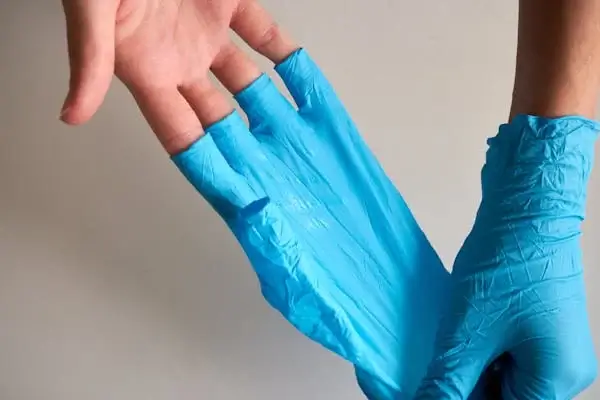Blue nitrile gloves come from synthetic rubber. These gloves are everyone’s favorite because they are versatile, durable, and resistant to chemicals. In addition, they are disposable, so you do not need to clean them. You can use the protective pieces in healthcare settings, labs, automobiles, and manufacturing.
However, the most controversial question is whether these items are food-safe. Food handling experts advise that Blue nitrile gloves are safe for the task. However, use the specific ones for food contact. When selecting gloves for food-related tasks, it’s essential to choose those that are explicitly labeled as “food-safe” or “food-grade.” There’s more to learn about these personal protective equipment.
Key Characteristics Of Nitrile Gloves
How can you identify a blue nitrile glove from other types of gloves?
- Material Composition
Nitrile gloves comprise a synthetic polymer called nitrile rubber. This material is a type of copolymer that combines acrylonitrile and butadiene, resulting in a durable and flexible glove.
- Latex-Free
Unlike latex gloves, nitrile gloves have no latex, making them a perfect choice for individuals with latex allergies or sensitivities.
- Chemical Resistance
Nitrile gloves offer excellent resistance to a wide range of chemicals, oils, solvents, and other substances. This makes them suitable for tasks involving exposure to various potentially harmful materials.
- Durable And Puncture-Resistant
Nitrile gloves are known for their strength and durability. They provide a reliable barrier against punctures, tears, and abrasions, offering protection for the hands in demanding work environments.
- Flexibility And Comfort
Nitrile gloves provide a high level of flexibility and comfort, allowing wearers to maintain dexterity and tactile sensitivity. Flexibility is crucial in tasks that require precision and fine motor skills.
- Powder-Free Options
Many nitrile gloves are available in a powder-free form. Powder-free gloves reduce the risk of contamination in sensitive environments, such as healthcare or food handling.
- Color Variations
Nitrile gloves come in various colors, with blue and purple being common choices. This color variety can serve specific purposes, such as easy identification or color-coding in healthcare settings.
- Disposable Nature
Nitrile gloves blue are designed for single-use applications, promoting hygiene and preventing the spread of contaminants. They are often used in situations where frequent glove changes are necessary.
Whether in medical examinations, laboratory work, food handling, or industrial settings, nitrile gloves have become a go-to choice for professionals seeking reliable hand protection. Their versatility, strength, and allergen-free nature contribute to their widespread use across diverse industries.
Blue Nitrile Gloves Food Pros and Cons
Though nitrile gloves blue are ubiquitous in various industries, they have their setbacks. Before you buy for food handling, you need to know the pros and cons and if, indeed, the gloves are food-safe.
Pros
- Blue nitrile gloves have a high level of resistance against many chemicals, oils, and solvents. This quality makes them a reliable choice for handling a variety of food items without fear of contamination.
- They are durable and puncture resistant, thus wholly protecting your hands from price and chemical exposure.
- The gloves are latex-free, making them an excellent alternative for individuals with latex allergies. This ensures broader accessibility in various food service settings.
- These glove nitrile blue are a comfortable fit, allowing for skill in handling small items or intricate tasks during food preparation.
- The distinct blue color of these gloves aids in easy identification, ensuring that any potential glove particles are immediately noticeable on food surfaces.
Cons
- Blue nitrile gloves can be more expensive than some alternatives, which may impact budget considerations for businesses in the food industry, especially those with high usage rates.
- Nitrile gloves are not biodegradable, contributing to environmental concerns. The disposal of large quantities of these gloves can lead to increased waste in landfills.
- The gloves have limited resistance to high temperatures. So, prolonged exposure to hot surfaces or liquids may cause the gloves to degrade.
- Some gloves are available in a powdered form, which can be a concern in food handling as the powder may pose contamination risks.
- While nitrile gloves are latex-free, some individuals may still exhibit allergic reactions to certain components used in the manufacturing process. It’s essential to be aware of potential allergenicity concerns.
Parting Shot!
In conclusion, the blue nitrile gloves are food-safe, but you must choose wisely. Careful selection of gloves labeled as food-grade and adherence to proper usage is essential. Also, the disposal practice should follow the set rules to ensure safety. Before you buy the blue nitril gloves, take time to understand the pros and cons to make informed decisions. Enjoy your cooking.


